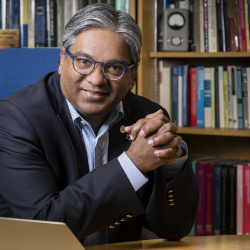Surrey reveals simple method to produce high performing Lithium Selenium batteries
Engineers at the University of Surrey have developed a simple and elegant method of producing high-powered lithium-selenium (Li-Se) batteries.

Rechargeable lithium-ion batteries (LIBs) are considered the best hope for next-generation battery technology, thanks to their long-life cycle, high specific power and energy density. However, they have not met the ever-increasing demands of emerging technologies such as electric vehicles. Li-Se battery technology is increasingly considered a real alternative to LIBs because of its high theoretical volume capacity and much higher conductivity.
In the first study of its kind, published by the Nature Communications journal, engineers from Surrey’s Advanced Technology Institute (ATI), in collaboration with the team at University Technology of Sydney detail how they used a single-atom catalyst to create highly effective cathodes for Li-Se batteries. They demonstrate that their batteries have a superior rate capability and outstanding long-term cycling performance.
The Surrey team used a straightforward method to delicately control Zeolitic Imidazolate Framework (ZIF) particles that were placed on the surface of polystyrene spheres. The core-shell of the ZIF was then converted into a hollow structured carbon material.
Through further fine-tuning, the team from the ATI successfully produced atomic cobalt electrocatalyst, nitrogen-doped hollow porous carbon, nitrogen-doped hollow porous carbon and cobalt nanoparticles. By embedding selenium in hollow structured carbon particles, carbon/selenium composites were produced.
The atomic cobalt electrocatalysts were used as cathode materials for Li-Se batteries and clearly showed superior electrochemical performance including a superior rate capability (311 mA h g−1 at 50 C) and excellent cycling stability (267 mA h g−1 after 5000 cycles with a 0.0067% capacity decay per cycle at a current density of 50 C) with the Coulombic efficiency of ~100%.
Dr Jian Liu, one of the lead authors and Reader (Associate Professor) of Energy Materials at the ATI, said: “We truly believe that our atomic cobalt-doped synthesized material can pave the way for Lithium Selenium batteries to be the go-to battery technology for future generations. While our results are incredibly encouraging, there is still some way to go to make our dream of high-capacity, sustainable battery technology a reality.”
Professor Ravi Silva, Director of the ATI at the University of Surrey, said: “We are incredibly proud of the highly creative and excellent work that Dr Liu’s team has produced – a piece of research that may be a defining moment for sustainable battery technology development.”
Note to editors
Read the full paper here.
Featured Academics
Media Contacts
External Communications and PR team
Phone: +44 (0)1483 684380 / 688914 / 684378
Email: mediarelations@surrey.ac.uk
Out of hours: +44 (0)7773 479911
